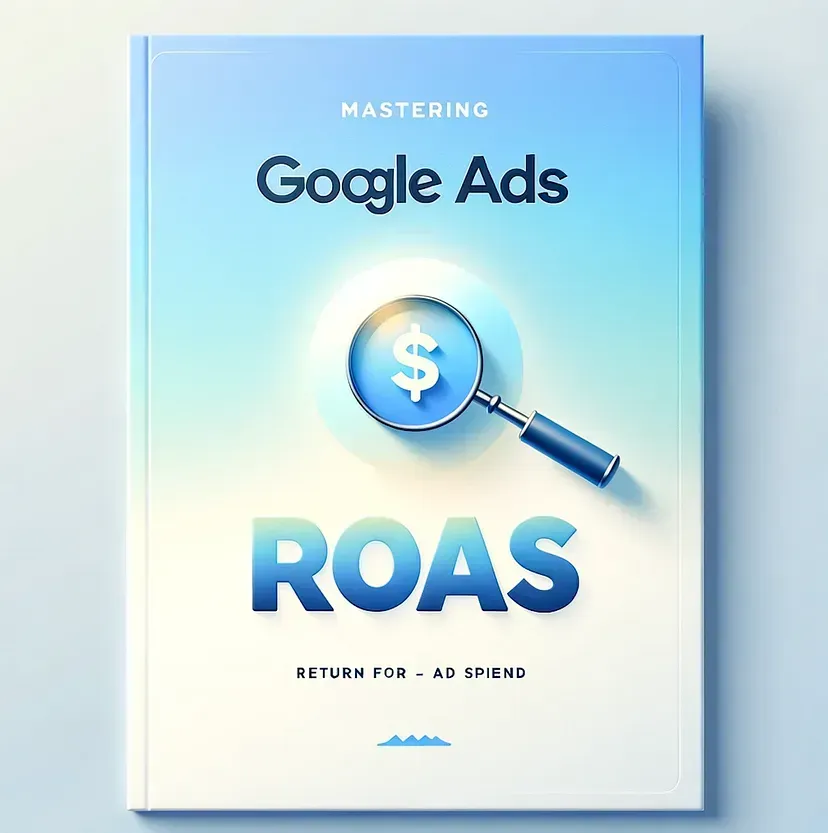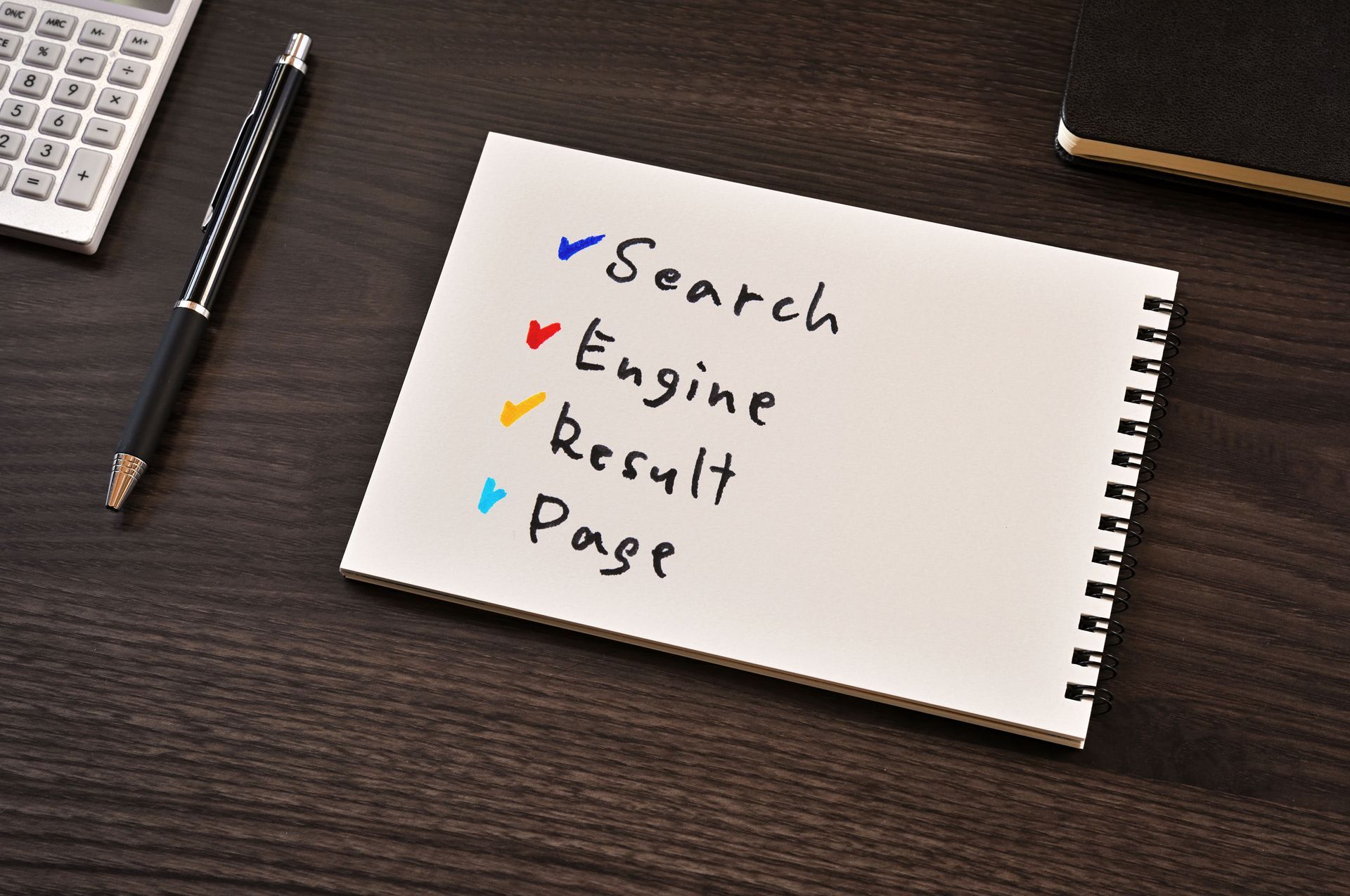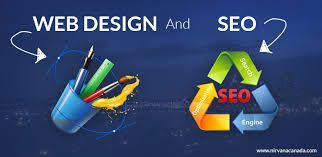Bolt Group Marketing Blog

When it comes to local search, Google Maps is an invaluable tool for businesses looking to attract nearby customers. Having a strong presence on Google Maps can drive more foot traffic, increase online visibility, and ultimately, boost sales. But how can you ensure your business stands out in the crowded local search results? Follow these 11 easy steps to enhance your Google Maps ranking and get noticed by more potential customers. For more specialized help with local SEO, check out the services offered by Bolt Group Marketing . 1. Claim and Verify Your Google Business Profile Before you can optimize your Google Maps listing, you need to claim and verify your Google Business Profile. This profile, previously known as Google My Business (GMB), is essential for appearing on Google Maps and local search results. Steps to Claim and Verify: Go to Google Business Profile. Click "Manage now" and sign in with your Google account. Enter your business name and address. Follow the prompts to verify your business. This may involve receiving a verification code via mail or phone. Why It Matters: Verification ensures that only you can make changes to your listing. It improves your credibility and trustworthiness in Google's eyes. 2. Complete Your Business Information Having complete and accurate business information is crucial for ranking well on Google Maps. This includes your business name, address, phone number, and website. Essential Details to Include: Business Name: Use your official business name as it appears on your signage. Address: Ensure it is the exact address where your business is located. Phone Number: Include a local phone number rather than a toll-free number. Website: Add a link to your website to direct customers to more information. Benefits of Complete Information: Helps Google understand your business better. Improves your chances of appearing in local search results. 3. Optimize Your Business Description Your business description is your chance to tell potential customers what you’re all about. Craft a compelling and keyword-rich description that highlights your services and unique selling points. Tips for an Effective Description: Be Concise: Keep your description within 750 characters. Include Keywords: Use relevant keywords that customers might search for. Highlight Unique Points: Mention what sets your business apart. Impact on Ranking: A well-written description can improve your visibility in relevant searches. Helps attract customers by clearly conveying your value proposition. 4. Choose the Right Categories Google allows you to select primary and secondary categories for your business. Choosing the right categories ensures that your business appears in relevant searches. How to Select Categories: Primary Category: Choose the category that best represents your core business (e.g., "Pizza Restaurant" for a pizza place). Secondary Categories: Add additional categories that apply to your business (e.g., "Italian Restaurant," "Takeout Restaurant"). Why It’s Important: Proper categorization helps Google show your business to the right audience. Increases your chances of appearing in local searches for related services. 5. Add High-Quality Photos Visual content plays a significant role in attracting customers. Uploading high-quality photos to your Google Business Profile can make your listing more appealing and informative. Types of Photos to Include: Business Exterior and Interior: Show what your business looks like from the outside and inside. Products and Services: Highlight your products or services. Team Photos: Introduce your staff to personalize your business. Advantages of Quality Photos: Engages potential customers. Provides a better understanding of what to expect when visiting your business.

In the world of digital marketing, understanding how well your advertising investments are performing is crucial for optimizing your marketing strategy. One key metric to evaluate the effectiveness of your ads is Return on Ad Spend (ROAS). This blog will delve into what ROAS is, why it matters, and how it can be a game-changer for your marketing efforts. We’ll also explore how Bolt Group Marketing’s PPC services can help you maximize your ROAS and drive better results for your business. What Is Return on Ad Spend (ROAS)? Return on Ad Spend (ROAS) is a metric used to measure the revenue generated for every dollar spent on advertising. It is a key performance indicator (KPI) that helps businesses understand how effectively their ad spend is contributing to their overall revenue. How ROAS Is Calculated The ROAS formula is straightforward: ROAS=Revenue Generated from AdsCost of Ads\text{ROAS} = \frac{\text{Revenue Generated from Ads}}{\text{Cost of Ads}}ROAS=Cost of AdsRevenue Generated from Ads For example, if you spend $1,000 on a campaign and generate $5,000 in revenue from that campaign, your ROAS would be: ROAS=50001000=5\text{ROAS} = \frac{5000}{1000} = 5ROAS=10005000=5 This means you earn $5 for every $1 spent on advertising. Types of ROAS Gross ROAS : Measures the total revenue generated from ads before deducting costs. Net ROAS : Accounts for costs such as production and shipping to provide a more accurate picture of profitability. Why ROAS Is Important ROAS provides valuable insights into the performance of your advertising campaigns. Here’s why it’s a crucial metric: 1. Measuring Advertising Effectiveness ROAS helps you gauge whether your advertising efforts are delivering a positive return. If your ROAS is high, it indicates that your ads are generating significant revenue relative to the cost. Conversely, a low ROAS suggests that your ads may not be as effective. 2. Optimizing Ad Spend By analyzing ROAS, you can make data-driven decisions about where to allocate your ad budget. High ROAS campaigns can be scaled up, while low ROAS campaigns may need adjustments or elimination. 3. Understanding Customer Behavior ROAS can reveal insights into customer behavior. For instance, if certain ads generate a high ROAS, it may indicate that the targeting and messaging resonate well with your audience. 4. Improving Marketing ROI Ultimately, a higher ROAS means a better return on your advertising investment. By focusing on improving ROAS, you can enhance your overall marketing ROI and achieve more cost-effective results.

1. Introduction Facebook Lead Ads are a powerful tool for businesses aiming to capture potential customers' information directly on the platform. These ads streamline the lead generation process by allowing users to submit their contact details without leaving Facebook, making it easier to connect with potential customers. Lead generation is a crucial aspect of digital marketing as it helps businesses find and connect with prospective clients, ultimately driving sales and growth. This blog will provide an in-depth look at what Facebook Lead Ads are, their benefits, and how to use them effectively. Whether you're new to Facebook advertising or looking to optimize your existing campaigns, this guide will equip you with the knowledge and strategies needed to succeed. 2. What Are Facebook Lead Ads? Facebook Lead Ads are designed to simplify the process of collecting information from potential customers. Unlike traditional ads that redirect users to an external landing page, Lead Ads present a form within Facebook itself. This seamless experience increases the likelihood of users completing the form, thereby boosting lead generation. Features of Facebook Lead Ads: Pre-filled Forms : Facebook automatically fills out parts of the form using information from the user's profile, such as name and email, reducing the effort required from the user. Mobile-Friendly : Designed with mobile users in mind, these ads ensure a smooth experience across all devices. Customizable Forms : Businesses can customize the form fields to capture specific information relevant to their needs. Benefits of Facebook Lead Ads: Increased Conversion Rates : The ease of submitting information within Facebook leads to higher conversion rates. Cost-Effective : Facebook Lead Ads often have a lower cost per lead compared to traditional methods. Integration with CRM : Lead Ads can be integrated with CRM systems, enabling real-time lead management and follow-up. 3. Why Use Facebook Lead Ads? Using Facebook Lead Ads offers several advantages, making them an effective tool for businesses of all sizes. High Mobile Usage and Accessibility: Mobile Dominance : With over 98% of Facebook users accessing the platform via mobile devices, Lead Ads cater to this audience by offering a mobile-optimized experience. Ease of Use : Users can complete the lead form without leaving the Facebook app, reducing drop-off rates. Lower Friction for Users: Auto-Fill Features : By auto-filling form fields with information from the user's Facebook profile, Lead Ads minimize the effort required from users, increasing the likelihood of form completion. Cost-Effectiveness and High ROI: Affordable Leads : Facebook Lead Ads typically result in a lower cost per lead compared to other advertising methods. Better ROI : The high conversion rates and affordability of Lead Ads contribute to a better return on investment. Real-Time Lead Capture and Nurturing: Immediate Follow-Up : Leads captured through Facebook Lead Ads can be instantly integrated with CRM systems, enabling prompt follow-up and nurturing. 4. Setting Up Facebook Lead Ads Setting up Facebook Lead Ads involves several steps, each crucial for creating an effective campaign. Prerequisites: Facebook Business Manager Account : Ensure you have a Facebook Business Manager account. Facebook Page : You need an active Facebook Page to run Lead Ads. Ad Account : An ad account within Facebook Business Manager is necessary to manage your ads. Step-by-Step Guide: Step 1: Creating the Campaign in Ads Manager Navigate to Ads Manager : Log in to your Facebook Business Manager and go to Ads Manager. Create a New Campaign : Click on the 'Create' button to start a new campaign. Step 2: Selecting the Lead Generation Objective Choose Campaign Objective : Select 'Lead Generation' as your campaign objective. Step 3: Defining the Target Audience Audience Selection : Define your target audience based on demographics, interests, and behaviors. Custom Audiences : Utilize custom audiences to target users who have previously interacted with your business. Step 4: Designing the Ad Ad Format : Choose the ad format (single image, carousel, or video) that best suits your campaign goals. Ad Creative : Create compelling visuals and ad copy that resonate with your target audience. Step 5: Creating the Lead Form Form Fields: Customize the form fields to capture the necessary information from leads. Custom Questions : Add custom questions to gather more specific data. Privacy Policy : Ensure your privacy policy is linked in the form to comply with Facebook’s guidelines. Step 6: Reviewing and Publishing the Ad Review : Double-check all settings and form fields for accuracy. Publish : Once satisfied, publish your ad to start collecting leads. 5. Best Practices for Facebook Lead Ads To maximize the effectiveness of your Facebook Lead Ads, follow these best practices: Crafting Compelling Ad Copy and Visuals: Clear and Concise Messaging : Ensure your ad copy clearly communicates the value proposition. Engaging Visuals : Use high-quality images or videos that capture attention and highlight your offer. Keeping the Lead Form Simple and Relevant: Minimal Fields : Limit the number of form fields to reduce friction and increase completion rates. Relevant Questions : Only ask for information that is essential for your follow-up process. Using Clear and Enticing Call-to-Actions (CTAs): Strong CTAs : Use compelling CTAs that encourage users to take action, such as "Sign Up Now" or "Get Started Today." A/B Testing Different Elements: Testing Variations : A/B test different headlines, images, and form fields to identify the most effective combinations. Continuous Optimization : Regularly review performance data and optimize your ads based on insights. Ensuring a Quick Follow-Up Process: Immediate Response : Respond to leads promptly to increase the chances of conversion. Automated Workflows : Use CRM integrations to automate lead nurturing and follow-up processes.

In the digital age, Search Engine Results Pages (SERPs) play a pivotal role in the success of any online business. SERPs are the pages displayed by search engines like Google in response to user queries, comprising a mix of organic listings, paid advertisements, and various features aimed at delivering relevant information quickly and efficiently.

In the world of digital marketing, ad buying plays a crucial role in influencing organic SEO rankings. Understanding how these two concepts are intertwined is essential for businesses looking to optimize their online presence and drive traffic to their websites. In this article, we will delve into the basics of ad buying, examine the relationship between ad buying and SEO, explore the factors that influence organic SEO rankings, discuss the role of ad buying in SEO strategy, and provide insights on measuring the impact of ad buying on SEO performance. Understanding the Basics of Ad Buying Ad buying is the process of purchasing advertising space on digital platforms, such as search engines, social media networks, and websites, to promote products or services. It involves bidding on keywords, audience targeting, and setting budgets to display ads to a specific audience. With ad buying, businesses can increase their visibility, reach a wider audience, and drive traffic to their websites. When it comes to ad buying, there are several key factors to consider. One of the most important aspects is keyword bidding. Businesses need to identify relevant keywords that their target audience is likely to use when searching for products or services. By bidding on these keywords, businesses can increase their chances of having their ads displayed when users search for those specific terms. Another crucial element of ad buying is audience targeting. Businesses need to define their target audience based on demographics, interests, and behaviors. By understanding their audience, businesses can create highly targeted ads that are more likely to resonate with potential customers. This helps to maximize the effectiveness of ad campaigns and improve the return on investment. Definition of Ad Buying Ad buying is a strategic approach to digital marketing that involves the purchase of ad space on various online platforms. By investing in paid advertising, businesses can enhance their online presence and attract potential customers. When businesses engage in ad buying, they are essentially investing in their online visibility. By purchasing ad space on popular digital platforms, businesses can increase their chances of being seen by their target audience. This can be particularly beneficial for businesses that are looking to expand their reach and attract new customers. Furthermore, ad buying allows businesses to leverage the power of data. Digital platforms provide valuable insights and analytics that can help businesses optimize their ad campaigns. By analyzing data such as click-through rates, conversion rates, and audience demographics, businesses can make informed decisions and refine their ad buying strategies for better results. Importance of Ad Buying in Digital Marketing Ad buying is an integral part of digital marketing strategies as it allows businesses to reach their target audience effectively. By displaying ads to users who are actively searching for specific products or services, businesses can increase their chances of engagement and conversions. One of the key advantages of ad buying is its ability to target specific audiences. Unlike traditional advertising methods, where businesses have limited control over who sees their ads, ad buying allows businesses to define their target audience based on various parameters. This precision targeting ensures that businesses are reaching the right people at the right time, increasing the likelihood of generating leads and sales. Moreover, ad buying enables businesses to compete against larger competitors and level the playing field in the online marketplace. In the digital realm, businesses of all sizes have the opportunity to reach a global audience. By investing in ad buying, smaller businesses can increase their visibility and compete with larger players, driving growth and expanding their market share. In conclusion, ad buying is a powerful tool in the digital marketing arsenal. It allows businesses to strategically place their ads in front of their target audience, increasing visibility, engagement, and conversions. By understanding the basics of ad buying and leveraging its potential, businesses can unlock new opportunities for growth and success in the online marketplace. The Relationship Between Ad Buying and SEO While ad buying focuses on paid advertising, organic SEO centers around optimizing a website's visibility in search engine results pages (SERPs) without paying for ad space. Although these two approaches differ conceptually, they are closely connected and can complement each other when implemented strategically. How Ad Buying Impacts SEO By investing in ad buying, businesses can potentially increase their website's click-through rates (CTRs) and drive more traffic. This, in turn, can positively influence organic SEO rankings. When search engines like Google detect higher engagement and relevancy signals from users clicking on paid ads and then engaging with the website's content, they may perceive the site as more authoritative and boost its organic search rankings. The Interplay of Paid and Organic Search Results Paid search results, generated through ad buying, appear at the top or bottom of search engine results pages, allowing businesses to gain immediate visibility. On the other hand, organic search results are displayed based on relevance and quality signals, without monetary influence. However, the interplay between paid and organic search results can lead to increased brand visibility, credibility, and overall website performance. Factors that Influence Organic SEO Rankings To better understand the impact of ad buying on organic SEO rankings, it is important to consider the various factors that search engines use to determine a website's position in organic search results. Keyword Relevance and Content Quality Search engines rely on keywords to identify the relevance of a website's content to user queries. By conducting thorough keyword research and creating high-quality, informative content that meets the needs of the target audience, businesses can enhance their chances of ranking well organically. User Experience and Site Speed Search engines prioritize user experience and consider factors such as website loading speed, mobile responsiveness, and ease of navigation when determining organic rankings. A slow-loading website or a site that is not mobile-friendly can negatively impact user experience and result in lower organic rankings. The Role of Ad Buying in SEO Strategy Ad buying can play a critical role in an overall SEO strategy by complementing organic efforts and enhancing a website's visibility and authority in search engine results. Boosting Visibility Through Ad Buying Ad buying allows businesses to target specific keywords and demographics, placing their ads in front of potential customers who are actively searching for relevant products or services. By increasing visibility through paid advertising, businesses can generate more traffic and potentially improve organic SEO rankings. Balancing Ad Buying and Organic SEO Efforts While ad buying can provide immediate results, an effective SEO strategy requires a balance between paid advertising and organic optimization. By investing in both approaches, businesses can benefit from short-term visibility and long-term organic growth. Measuring the Impact of Ad Buying on SEO Tracking and analyzing the performance of ad buying efforts in relation to organic SEO is key to understanding the effectiveness of a digital marketing strategy. Various tools and metrics can help businesses evaluate the impact of ad buying on their SEO performance. Tools for Tracking SEO Performance Platforms like Google Analytics and Google Search Console provide valuable insights into organic search traffic, keyword rankings, click-through rates, and user behavior. By utilizing these tools, businesses can identify trends, evaluate the effectiveness of ad buying campaigns, and make data-driven decisions to optimize their SEO strategies. Interpreting SEO Metrics in the Context of Ad Buying When evaluating SEO metrics, it is essential to consider the influence of ad buying on the results. For instance, an increase in organic traffic and conversions may be attributed to both effective ad buying campaigns and organic SEO efforts. By analyzing and interpreting these metrics holistically, businesses can gain a comprehensive understanding of the impact ad buying has on their overall SEO performance. In Conclusion Ad buying significantly influences organic SEO rankings by enhancing website visibility, driving traffic, and positively impacting engagement signals. By strategically balancing ad buying and organic SEO efforts, businesses can maximize their online presence and achieve long-term growth. Tracking and analyzing SEO metrics in relation to ad buying campaigns provide valuable insights to optimize digital marketing strategies and achieve business objectives.

In the world of digital advertising, it can sometimes feel like success is elusive. Every ad buyer strives for that perfect campaign that yields incredible results. But what if there was a way to boost your advertising efforts quickly and effectively? Enter SEO, or search engine optimization, a powerful tool that can help ad buyers achieve those quick wins they crave. In this article, we will explore the ins and outs of SEO for ad buyers and uncover the strategies that can lead to rapid success. Understanding SEO for Ad Buyers Before we dive into the realm of quick wins, let's first understand the importance of SEO in advertising. In a world where competition is fierce, getting your ads noticed is crucial. SEO helps to improve your website's visibility in search engine results, making it more likely that potential customers will find and click on your ads. The Importance of SEO in Advertising SEO acts as a bridge between search engines and your ad campaigns. When you optimize your website for search engines, you increase the chances of your ads appearing in relevant search results. This not only drives traffic to your website but also improves the overall performance of your ad campaigns. Key SEO Concepts for Ad Buyers As an ad buyer, it's essential to grasp the key concepts of SEO to make informed decisions. Two essential concepts to familiarize yourself with are keywords and backlinks. Keywords: These are the words or phrases that users enter into search engines when looking for information or products. By targeting relevant keywords in your ads and website content, you can increase your chances of appearing in search results. Backlinks: These are links from other websites that point to your website. Search engines consider backlinks as a vote of confidence, indicating that your website is valuable and trustworthy. Building quality backlinks can improve your website's search engine rankings. Quick Wins in SEO: What Are They? Now that we have a basic understanding of SEO for ad buyers, let's explore the concept of quick wins. In the context of SEO, quick wins refer to strategies that can yield noticeable results in a relatively short amount of time. These strategies focus on making immediate improvements to your website's search engine visibility, helping you gain an edge over your competitors. Defining 'Quick Wins' in SEO Quick wins can take many forms, but they all share the common goal of delivering results quickly. Some examples of quick wins include optimizing meta tags, improving website load times, and fixing broken links. These actions can have an immediate impact on your search engine rankings, driving more organic traffic to your website. Common Misconceptions About Quick Wins While quick wins can provide a significant boost to your ad campaigns, it's essential to approach them with caution. One common misconception is that quick wins are a one-time fix-all solution. In reality, SEO requires consistent effort and ongoing optimization to maintain long-term success. Quick wins should be seen as a stepping stone rather than a final destination. Strategies for Quick SEO Wins for Ad Buyers Now that we understand what quick wins are and their limitations, let's explore some strategies that can help you achieve rapid SEO success as an ad buyer. Keyword Optimization Techniques Keywords are the backbone of SEO. By optimizing your ads and website content with relevant keywords, you can improve your search engine rankings and attract more targeted traffic. Conduct keyword research to identify valuable keywords related to your ad campaigns, and strategically incorporate them into your content. Additionally, consider using long-tail keywords, which are more specific and typically have less competition. These keywords can help you target a niche audience and drive quality traffic to your website. On-Page SEO Tactics Another crucial aspect of quick SEO wins is on-page optimization. This involves optimizing elements on your website, such as titles, headings, and meta tags, to make them more search-engine-friendly. Ensure that your website is easily navigable, with a clear URL structure and intuitive internal links. Furthermore, focus on creating high-quality, informative content. Search engines prioritize websites that provide value to users, so invest time and effort in crafting engaging and user-friendly content that aligns with your ad campaigns. Off-Page SEO Approaches In addition to on-page optimization, off-page SEO strategies can also contribute to quick wins. Building high-quality backlinks from reputable websites can significantly improve your search engine rankings. Reach out to industry influencers, collaborate on guest posts, or create valuable content that naturally attracts backlinks. Additionally, leverage social media platforms to promote your ads and drive traffic back to your website. Engage with your target audience, share valuable content, and encourage social sharing to increase your online presence. Measuring the Impact of Quick SEO Wins As an ad buyer, it's crucial to measure the impact of your SEO efforts to understand their effectiveness. Without proper tracking and analysis, it's challenging to identify what strategies are delivering results and what areas need improvement. Tools for Tracking SEO Success Fortunately, numerous tools are available to help track and measure your SEO success. Google Analytics and Google Search Console are invaluable resources for understanding how your website is performing in search engine results. These tools provide invaluable data on organic traffic, keywords, and user behavior, empowering you to make data-driven decisions. Interpreting SEO Metrics When analyzing SEO metrics, keep in mind that every business and campaign is unique. Focus on the metrics that align with your specific goals. For instance, if your objective is to drive more traffic to your website, monitor metrics such as organic search traffic and bounce rate. If you're more interested in conversions, track metrics such as conversion rate and cost per acquisition. Risks and Considerations in Pursuing Quick SEO Wins While quick SEO wins can provide a boost to your ad campaigns, there are risks and considerations to keep in mind. Potential Pitfalls of Quick Wins One potential pitfall of pursuing quick wins is that they can sometimes lead to short-term gains at the expense of long-term success. Quick optimization techniques, such as keyword stuffing or purchasing backlinks, can result in penalties from search engines, causing more harm than good. It's crucial to prioritize sustainable, ethical SEO practices over quick fixes. Balancing Quick Wins with Long-Term SEO Strategy Quick wins are an excellent avenue to jumpstart your ad campaigns, but they should be balanced with a long-term SEO strategy. Investing in comprehensive SEO practices, such as content marketing and ongoing optimization, will yield sustainable results over time. Take the time to develop a holistic SEO approach that combines quick wins with a focus on long-term success. As an ad buyer, achieving quick wins in SEO is indeed possible. By understanding the importance of SEO in advertising, defining quick wins, and implementing effective strategies, you can take your ad campaigns to new heights. Remember to measure your SEO efforts, be mindful of potential risks, and strike a balance between quick wins and long-term success. With dedication and strategic execution, you'll be on your way to SEO success in no time.

In this article, we'll explore the importance of SEO and ad buying in 2024, unveil the latest SEO trends, delve into the emerging ad buying landscape, and discuss how you can prepare your business for these trends. Understanding the Importance of SEO and Ad Buying in 2024 In the rapidly evolving digital marketing landscape, SEO and ad buying have become essential tools for businesses to increase their online visibility, drive traffic to their websites, and ultimately generate more sales. SEO plays a crucial role in helping businesses rank higher on search engine results pages (SERPs), making it easier for potential customers to find them. On the other hand, ad buying allows businesses to strategically place advertisements across various online platforms to reach their target audience more effectively. The Role of SEO in Digital Marketing As digital marketing continues to evolve, SEO remains a fundamental aspect of any successful marketing strategy. SEO involves optimizing your website's content, structure, and technical elements to improve its visibility on search engines. In 2024, SEO is expected to focus more on delivering a seamless user experience, ensuring websites are accessible across all devices, and prioritizing relevant, high-quality content that aligns with user search intent. One of the key factors driving the evolution of SEO in 2024 is the increasing importance of mobile optimization. With the rise of smartphones and tablets, more and more users are accessing the internet on their mobile devices. This shift in user behavior has prompted search engines to prioritize mobile-friendly websites in their rankings. Therefore, businesses need to ensure that their websites are responsive and provide a seamless browsing experience on all screen sizes. In addition to mobile optimization, voice search is another trend that is shaping the future of SEO. With the growing popularity of virtual assistants like Siri, Alexa, and Google Assistant, more users are using voice commands to perform online searches. This has led to a shift in keyword research and content optimization strategies. In 2024, businesses will need to focus on optimizing their content for voice search by targeting long-tail keywords and providing concise, conversational answers to common user queries. The Impact of Ad Buying on Business Success Ad buying has proven to be a game-changer in the digital advertising space, enabling businesses to reach their target audience with precision. In 2024, ad buying will continue to evolve, with a particular emphasis on programmatic advertising. Programmatic advertising leverages artificial intelligence and machine learning to automate the buying and selling of online ads, allowing businesses to deliver personalized messages to consumers at the right place and time. One of the key advantages of programmatic advertising is its ability to target specific audience segments based on their demographics, interests, and online behavior. This level of targeting ensures that businesses can reach the right people with their ads, increasing the chances of conversion and maximizing return on investment. In 2024, programmatic advertising is expected to become even more sophisticated, with advancements in AI and data analytics enabling businesses to deliver hyper-personalized ads that resonate with individual consumers on a deeper level. Another trend that is expected to shape the future of ad buying in 2024 is the rise of native advertising. Native ads are designed to seamlessly blend in with the surrounding content, providing a non-disruptive advertising experience for users. This form of advertising has gained popularity due to its ability to engage users without being overly intrusive. In the coming years, businesses will need to focus on creating native ads that provide value to users and align with the context of the platform they are being displayed on. In conclusion, SEO and ad buying are two crucial components of a successful digital marketing strategy in 2024. With the ever-changing digital landscape, businesses need to stay ahead of the curve by adapting their SEO practices to prioritize user experience and mobile optimization. Similarly, ad buying strategies should evolve to leverage programmatic advertising and native ads to reach the right audience with personalized messages. By embracing these trends and staying up-to-date with the latest developments, businesses can effectively navigate the digital marketing landscape and drive meaningful results. Unveiling the Latest SEO Trends for 2024 As search engines become smarter and more sophisticated, SEO practices must adapt to keep up with the changing landscape. In 2024, several SEO trends are expected to shape the digital marketing world. The Rise of Voice Search Optimization Voice search is rapidly gaining popularity, thanks to the rise of smart speakers and virtual assistants. Optimizing websites for voice search involves adapting content to conversational language, answering commonly asked questions, and ensuring fast page-load speeds for an optimal user experience. The Importance of Mobile-First Indexing With the majority of internet traffic originating from mobile devices, Google has prioritized mobile-first indexing. This means that websites must be mobile-friendly and offer a seamless user experience on smartphones and tablets to rank higher in search engine results. The Emergence of AI in SEO Artificial intelligence (AI) is revolutionizing various industries, and SEO is no exception. AI-powered tools can analyze vast amounts of data, identify patterns, and optimize websites for enhanced performance. In 2024, integrating AI into SEO strategies will become increasingly essential for staying competitive. Exploring the Latest Ad Buying Trends for 2024 The realm of ad buying is also experiencing significant transformations, driven by evolving consumer behaviors. To maximize the impact of your ad campaigns, it's essential to keep up with these emerging trends. The Shift Towards Programmatic Advertising Programmatic advertising, which involves using AI and algorithms to automate ad buying, is set to become even more prevalent in 2024. This technology allows businesses to deliver targeted ads to specific audiences, optimizing ad placements and budgets in real-time. The Influence of Social Media on Ad Buying Social media platforms continue to dominate the digital landscape, attracting millions of users worldwide. In 2024, businesses will increasingly leverage social media for ad buying, leveraging advanced targeting options and creative formats to engage with their audience effectively. The Growth of Video Advertising Video advertising has become a powerful tool for capturing consumers' attention and conveying brand messages. In 2024, we can expect a surge in video ad spending, with businesses harnessing the persuasive storytelling capabilities of videos to connect with their target audience in more meaningful ways. Preparing Your Business for SEO and Ad Buying Trends Adapting to the rapidly changing SEO and ad buying landscape requires proactive measures. Here are some strategies to help prepare your business for these emerging trends: Adapting to SEO Changes Stay up to date with the latest SEO best practices and algorithm updates to ensure your website remains search engine-friendly. Invest in optimizing for voice search and mobile-first indexing, and create high-quality, relevant content that aligns with user search intent. Making the Most of Ad Buying Opportunities Embrace programmatic advertising to optimize your ad campaigns and reach your target audience more effectively. Leverage social media platforms to engage with your audience and create compelling video ads that resonate with your customers. The Future of SEO and Ad Buying Beyond 2024 While we've discussed the latest trends for 2024, it's important to look beyond the horizon and anticipate future developments in SEO and ad buying. Predicted Developments in SEO In the coming years, we can expect advancements in natural language processing, personalized search experiences, and further integration of AI into SEO strategies. Machine learning algorithms will continue to refine search engine algorithms, making search results more precise and tailored to individual users. Anticipated Trends in Ad Buying The realm of ad buying will continue to evolve with advancements in data analysis and AI technology. As consumer behavior becomes more complex, businesses will need innovative strategies to deliver personalized, targeted ads to capture attention and drive conversions. As we enter 2024, embracing these latest trends in SEO and ad buying will position your business for success in the digital landscape. By staying informed, adapting to changes, and making strategic marketing decisions, you can stay ahead of the curve and drive your business towards growth and prosperity.



